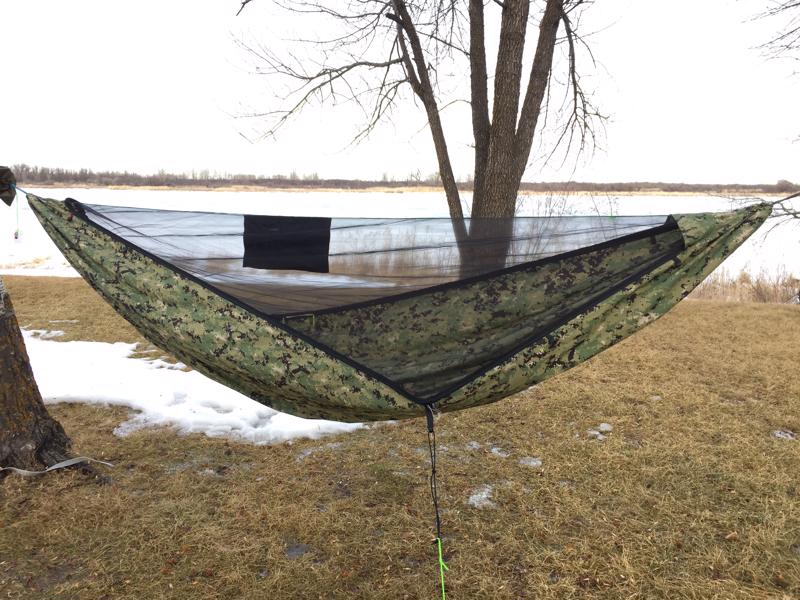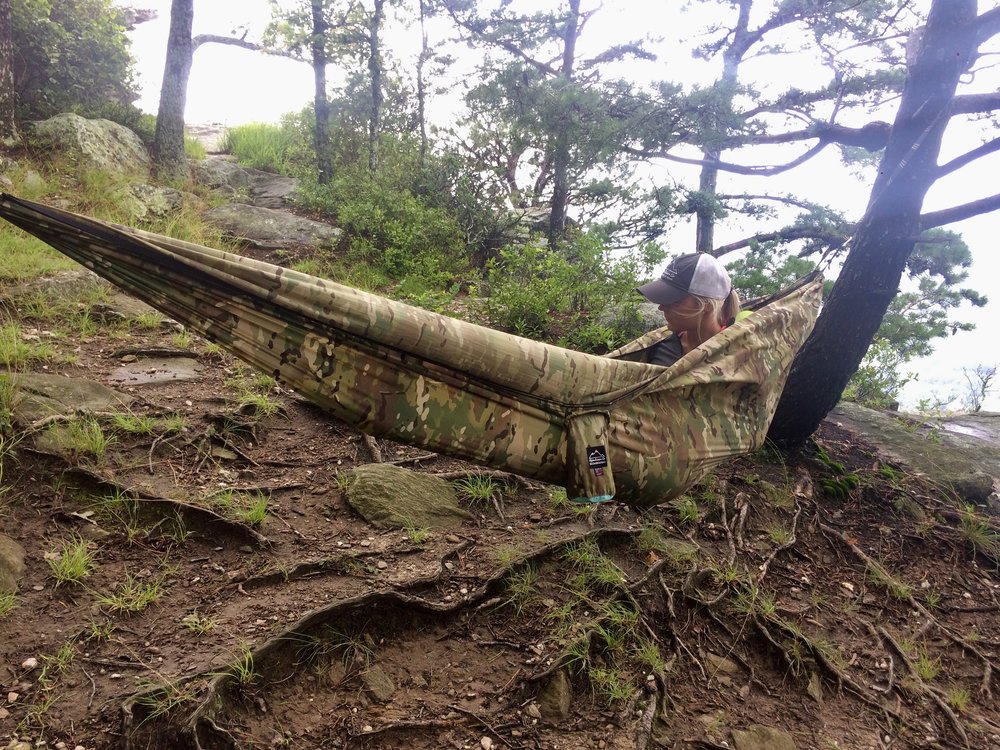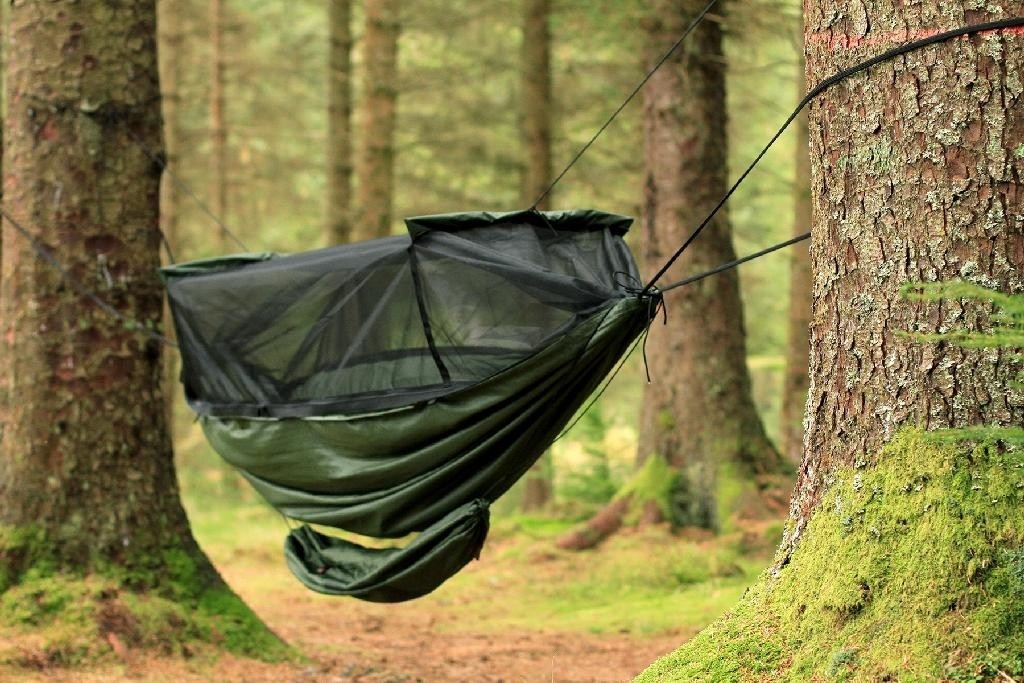If you’re a camping enthusiast, you may be convinced that nothing beats the sleeping environment that nature can provide us with. You may be right – there’s nothing better than falling asleep under an open sky, gazing at the stars. Except for one thing, maybe: rocking yourself to sleep under an open sky, gazing at the stars. And that’s only one of the benefits of hammock camping.
Hammock camping is the tent camping alternative that’s becoming more and more popular. Wondering is hammock camping worth it? Whether you’re looking for new adventures or you’re looking for new ways to enhance your camping experience, hammock camping is the way to go.
What Is Hammock Camping Why Should You Try It?

Hammock camping involves spending the night in a hammock instead of a traditional tent. Many campers love their tents, and they’re unlikely to ditch the idea of using one when camping. This is very understandable – tents have been used for camping for years, spending the night in one feels more secure, and they’re great when camping with the whole family and pets. However, many backpackers and bikers love the idea of having a tent alternative that’s more lightweight and portable and easier to set up and take down. Those who tried camping in a hammock claim it’s a fun and comfortable outdoor experience that everyone should try.
Most people aren’t willing to give hammock camping a try because of the many misconceptions that have been spread but aren’t true. For example, many people think that sleeping in a hammock is cold, unsafe and uncomfortable. Others think that hammocks are complicated to set up and have a limited weight capacity. None of these claims is real for the well-prepared people who go hammock camping. Buying the right hammock, setting it up correctly and taking care of all the accessories you need are vital steps for creating a comfy camp.
Step 1: Buy the Right Hammock

Packing your backyard hammock won’t help you much when preparing for camping in the wilderness. To survive a night out, you need a hammock specifically designed for camping or backpacking. You need it to be comfortable, lightweight, portable and durable. From all the camping hammocks out there, tactical hammocks are the best choice for those who want to buy a premium quality model.
Tactical hammocks are a part of the tactical gear used by the military and Special Forces. Being designed with the needs of professional soldiers and infantrymen in mind, these hammocks are made from the highest quality materials, like the 70D Zeta, which is both IR compliant and water repellent. It’s a material that’s so breathable that it is often used for quilting, but at the same time, it’s waterproof. It’s one of the most durable fabrics, not susceptible to wear and tear. And camo design makes you blend in with the environment, keeping you safe from animals that may come your way.
Besides quality, military hammocks are ultra-lightweight. Most of them don’t weigh more than half a kilo and can be easily packed in small pocket-sized bags. When the main part of your camping gear takes so little space, you can organise your backpack in a way you can take other necessities and accessories to make your experience more enjoyable.
Tactical sleeping gear, including hammocks, is made to ensure soldiers get a good sleep in any weather conditions and on any terrain. They’re designed for a quick and fuss-free set-up to rest comfortably wherever you are. Soldiers tie them not only to trees but to their Humvees and tanks in the desserts and the woods. This shows how these jungle army hammocks can be a good choice for anyone, even for extreme adventurers. When choosing a camping hammock, the most important factors to keep in mind are the dimensions and weight capacity. These factors shouldn’t worry you, as most army hammocks are made to fit any soldier, and they often have a weight capacity of up to 180 kilos.
They can be the versatile piece of your survival kit that you can include in your emergency backpack. That way, you can have peace of mind that you got yourself a safe shelter no matter what.
Suppose you decide on choosing a tactical hammock for your next camping trip. In that case, you’re setting yourself up for a comfortable and successful military-style camping experience that will make you fall in love with hammocks.
Step 2: Set It Up Correctly

The first thing to do for a successful setup is to find a good location. Ensure it’s a legal camping area and that hammocks are approved by law. The next thing would be tying your hammock to trees. To do that, you need a suspension system. Check if your hammock comes with one or you need to buy it separately. There are three main types of suspension systems:
- Chain straps
- Tree straps
- Single rope system
The chain straps are the most beginner-friendly as they’re the simplest to use and require no knot-tying. They can be more expensive, though. Tree straps are also easy to use, with one or two knots required. And for the single rope system, you have to have advanced knot-tying knowledge. If you’re a camper and hiker already, none of these should be a problem for you, as most campers also need these techniques for setting up their tents. If you’re new to this, make an informed decision when buying your hammock suspension system and practice set up in advance.
Another thing to consider is applying some wilderness ethics. Make sure your tree straps are tree-saving, environment friendly that won’t cause any damage to the trees you’ll tie your hammock to. Choose only healthy trees – no dead or damaged trees, to avoid accidents and injuries. Set up your hammock tent early enough to avoid tying in the dark.
Step 3: Accessorise Well
Choosing a compact and lightweight hammock over a robust tent will make plenty of room in your backpack for additional accessories. Rainfly or rain tarp are some of the most important ones to keep you dry if it starts to rain. Bug nets are crucial to keep you safe from mosquitos and other bugs in the wilderness, especially if you’re planning your trip to take place in warmer months. A hammock will keep you cool during hot nights, but if you’re camping in winter, you must pack some extra insulation to stay warm during the night. A sleeping bag, an underquilt and an extra blanket will be enough.